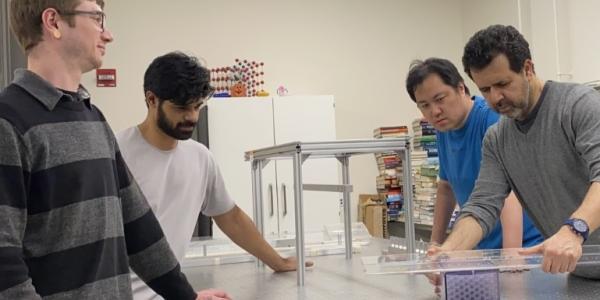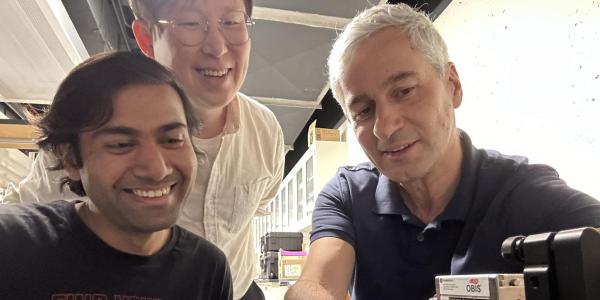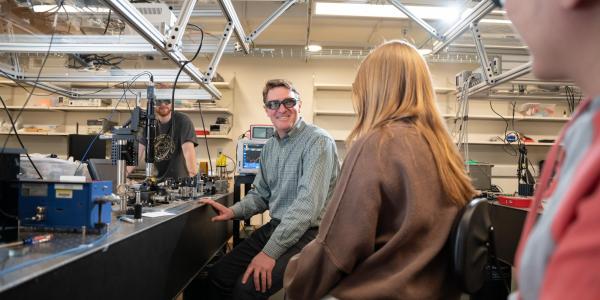Three faculty members from the CU Boulder College of Engineering and Applied Science are conducting projects awarded through the U.S. Department of Defense’s Multidisciplinary University Research Initiative (MURI) Program.
The highly competitive research program has been enabling major contributions to military capabilities and producing commercial sector applications since 1985.
“Our college emphasizes collaboration across various research disciplines,” said Michael Gooseff, associate dean for research in the College of Engineering and Applied Science. “By prioritizing programs like MURI, we harness the diverse expertise across STEM fields to push the envelope for scientific breakthroughs.”
The three new MURI projects in the college include:
Hussein is the main principal investigator and represents CU Boulder as the lead institution for that MURI project. Barthelat and Diddams will be collaborating on projects led by faculty from other peer institutions.
Each project will receive an average award of $7.5 million over the next five years.
2024 Department of Defense CU Engineering MURI Projects

Control of Hypersonic Flows by Phononic Subsurfaces
Mahmoud Hussein - Ann and H.J. Smead Department of Aerospace Engineering Sciences and Department of Physics (courtesy)
This grant will establish a new paradigm for passive manipulation of air flow over hypersonic vehicles using ideas rooted in condensed matter physics. This endeavor will delay laminar-to-turbulent transitions around these vehicles, significantly reducing drag and surface temperature levels — two targets that promise to bring the dream of hypersonic passenger airplanes much closer to reality. A future hypersonic airplane could cut travel time for passengers to destinations across the globe by five times or more.
This research is based on a concept Hussein discovered when he started a collaboration with the late Professor Sedat Biringen in Smead Aerospace more than 15 years ago. The main premise of this concept is to tailor elastodynamic properties of an elastic structure interfaced with a surface exposed to a flow in a manner that creates favorable coherent wave interactions between the solid and the flow.
This research will augment efforts to develop the phononic subsurfaces technology to benefit potentially subsonic aircraft like commercial airliners, significantly improving fuel economy and bringing tangible environmental rewards.

Predicting Performance Outcomes for Heterogeneous Materials Under Complex Loading
Francois Barthelat - Paul M. Rady Department of Mechanical Engineering
The objective of this project is to develop and validate models for the failure of materials and structures under extreme mechanical loads. Engineers can generally predict the failure of materials and structures subjected to relatively moderate loading conditions based on averaged properties. However, in the case of extreme loading conditions or impact, defects and heterogeneities make predictions more challenging, and failure might occur unexpectedly and away from the impact site.
This research project can help predict and prevent the collapse of mines, dams, bridges or buildings; predict earthquakes, which are triggered by mechanical failure along faults in the Earth’s crust; and even predict avalanches — a serious danger in Colorado. An important application could be the prediction and prevention of ruptured aneurysm, which can also be interpreted as a mechanical failure of a blood vessel. In all these examples, these models can incorporate uncertainties in material properties, existing defects, accumulating damage and loading conditions for more accurate predictions and therefore more effective failure prevention.

Fundamental Limits of Passive Heterodyne Photodetection of Incoherent, Broadband Sources
Scott Diddams - Department of Electrical, Computer & Energy Engineering and Department of Physics (courtesy)
The goal of this MURI is to understand the fundamental limits in heterodyne detection of thermal radiation with laser light. This is anticipated to lead to powerful new approaches in imaging and spectroscopy by combining signals from multiple apertures or telescopes to provide images with higher spatial resolution.
These techniques are common in radio astronomy, but the application to high-frequency light fields is largely unexplored. Since light is fundamentally composed of photons, the team will leverage new opportunities in manipulating the quantum properties of the heterodyne process to yield better sensitivity in these measurements. They envision these methods will also be applicable for remote sensing, trace gas detection and atmospheric sciences.
Diddams will be collaborating with Professor Thomas Schibli in the Department of Physics on this project.
